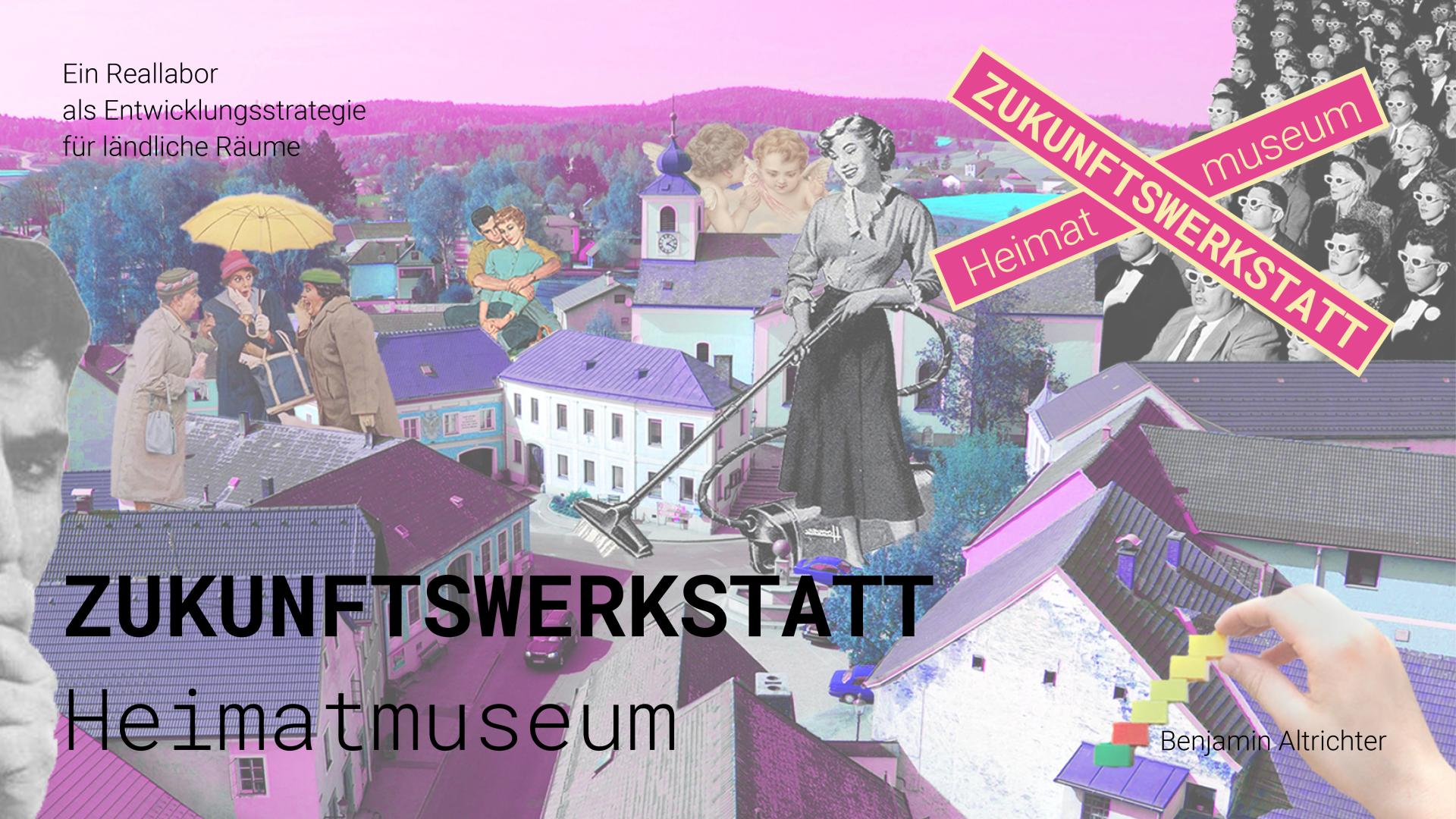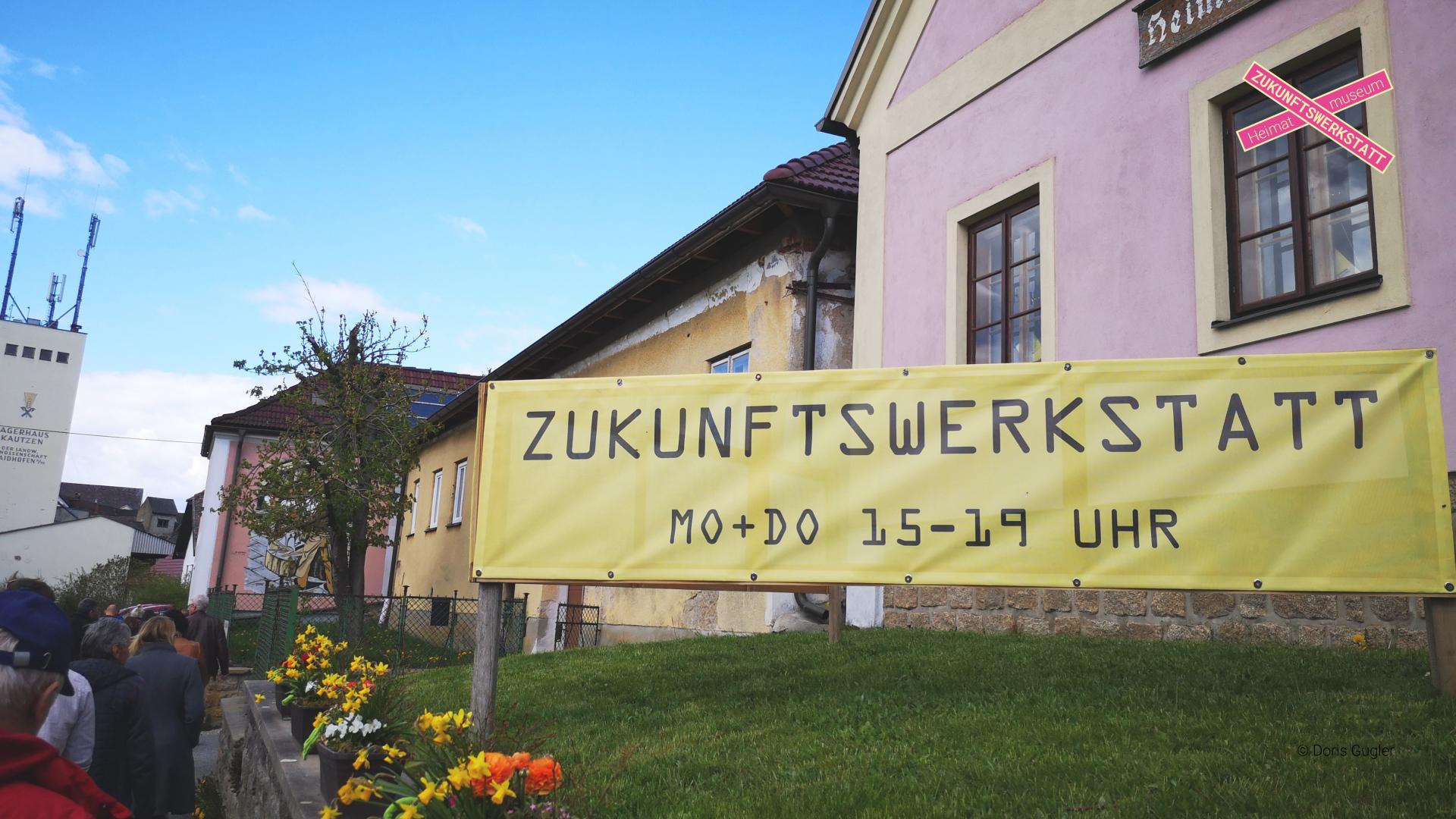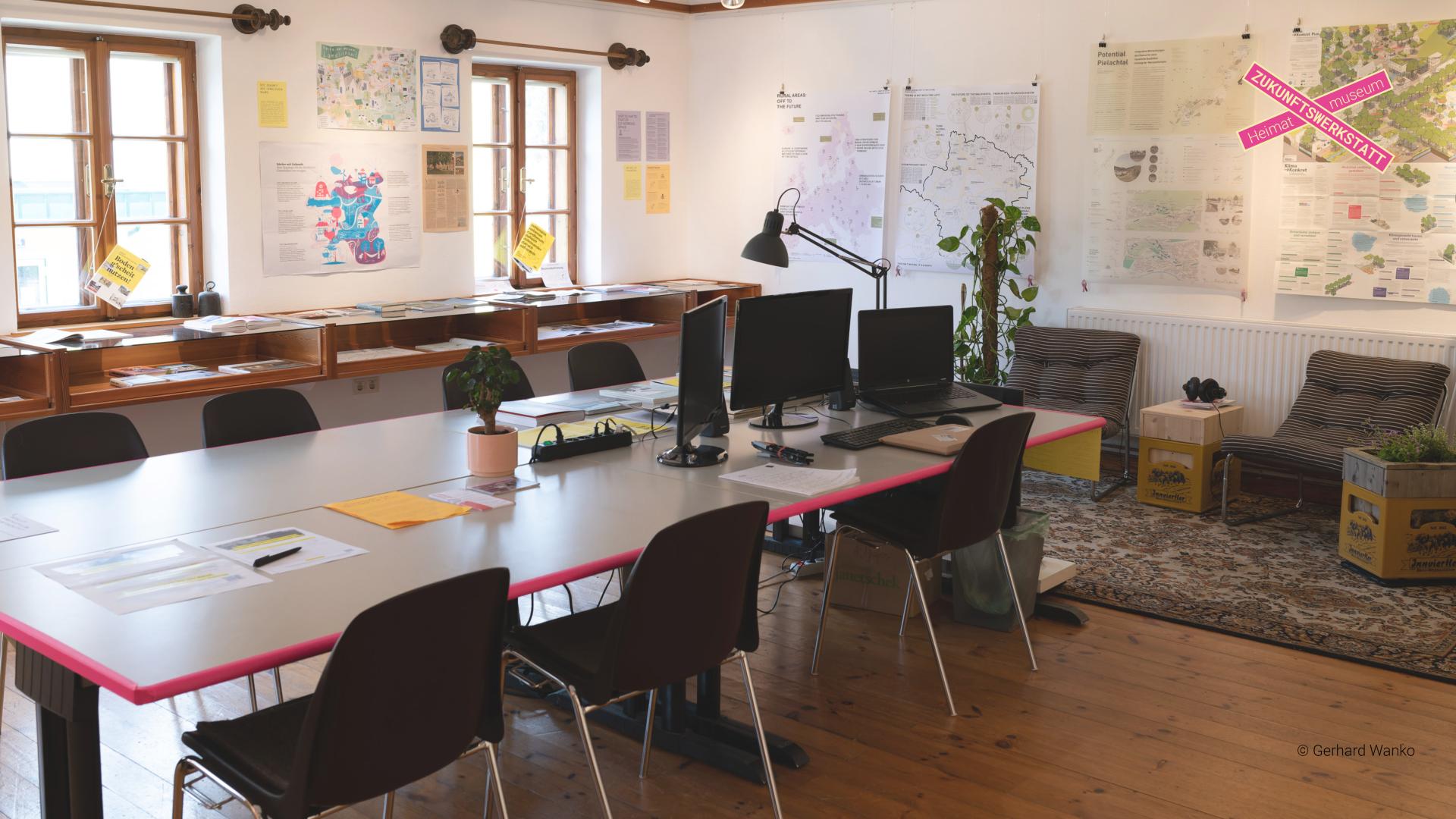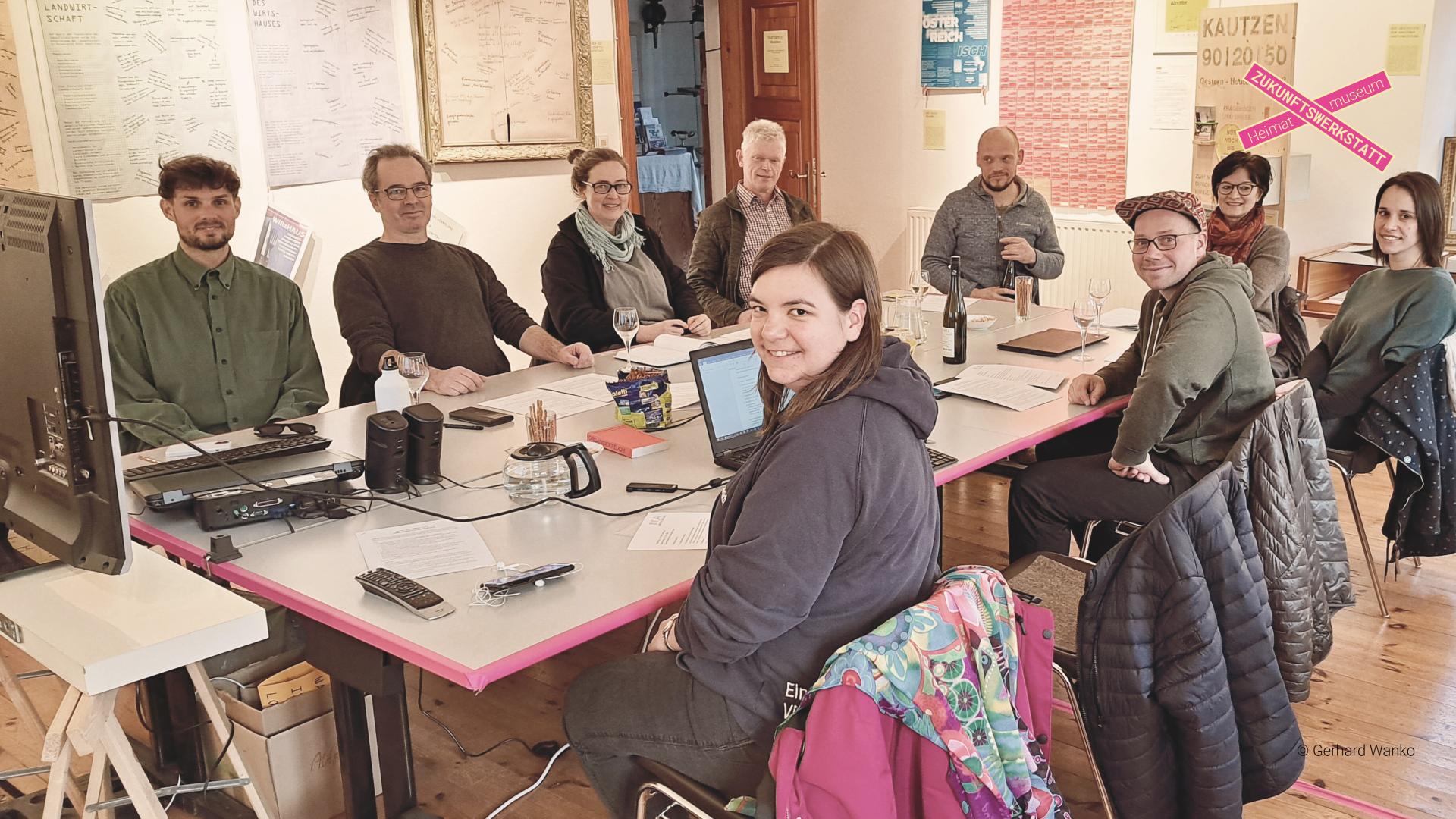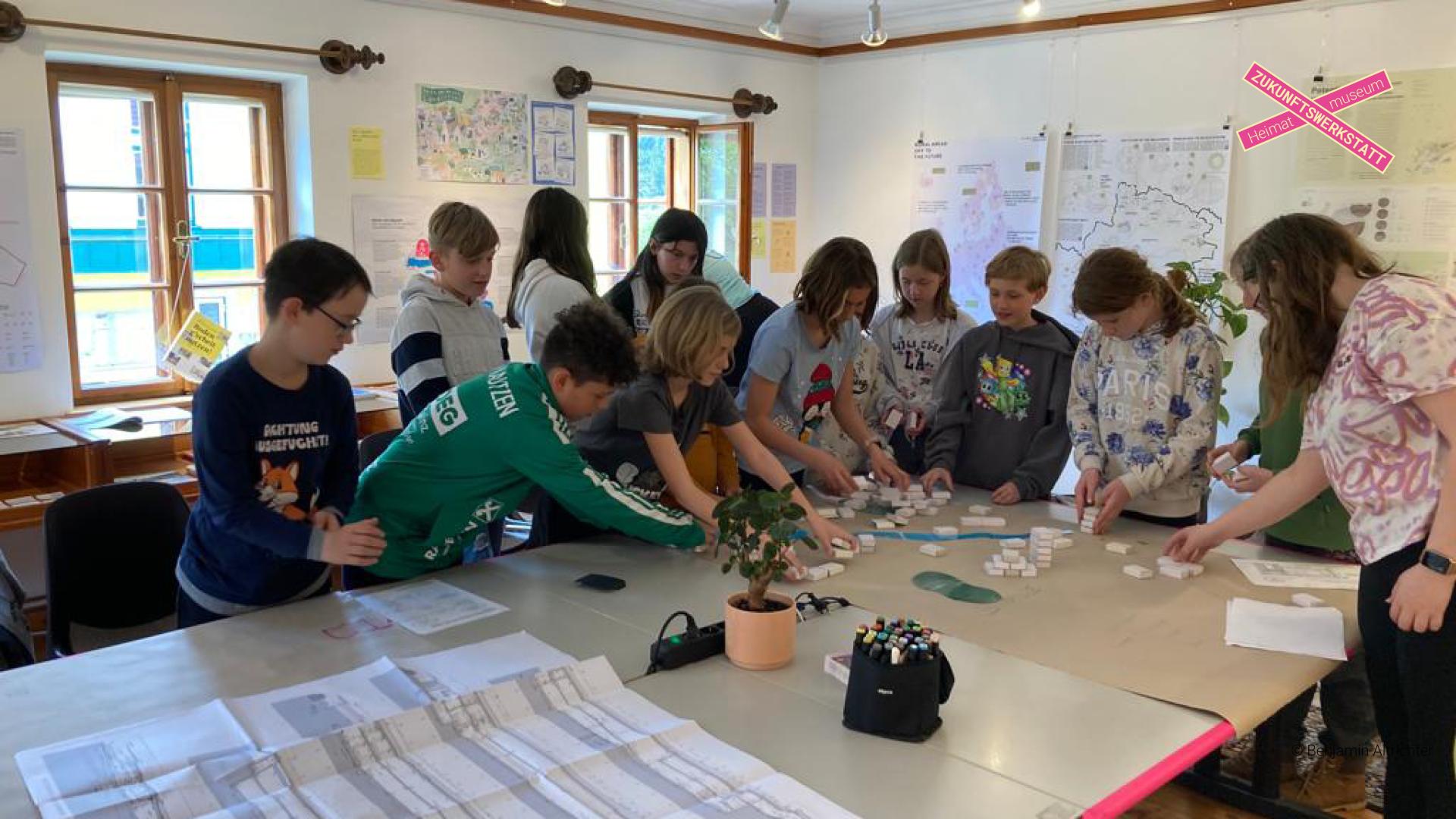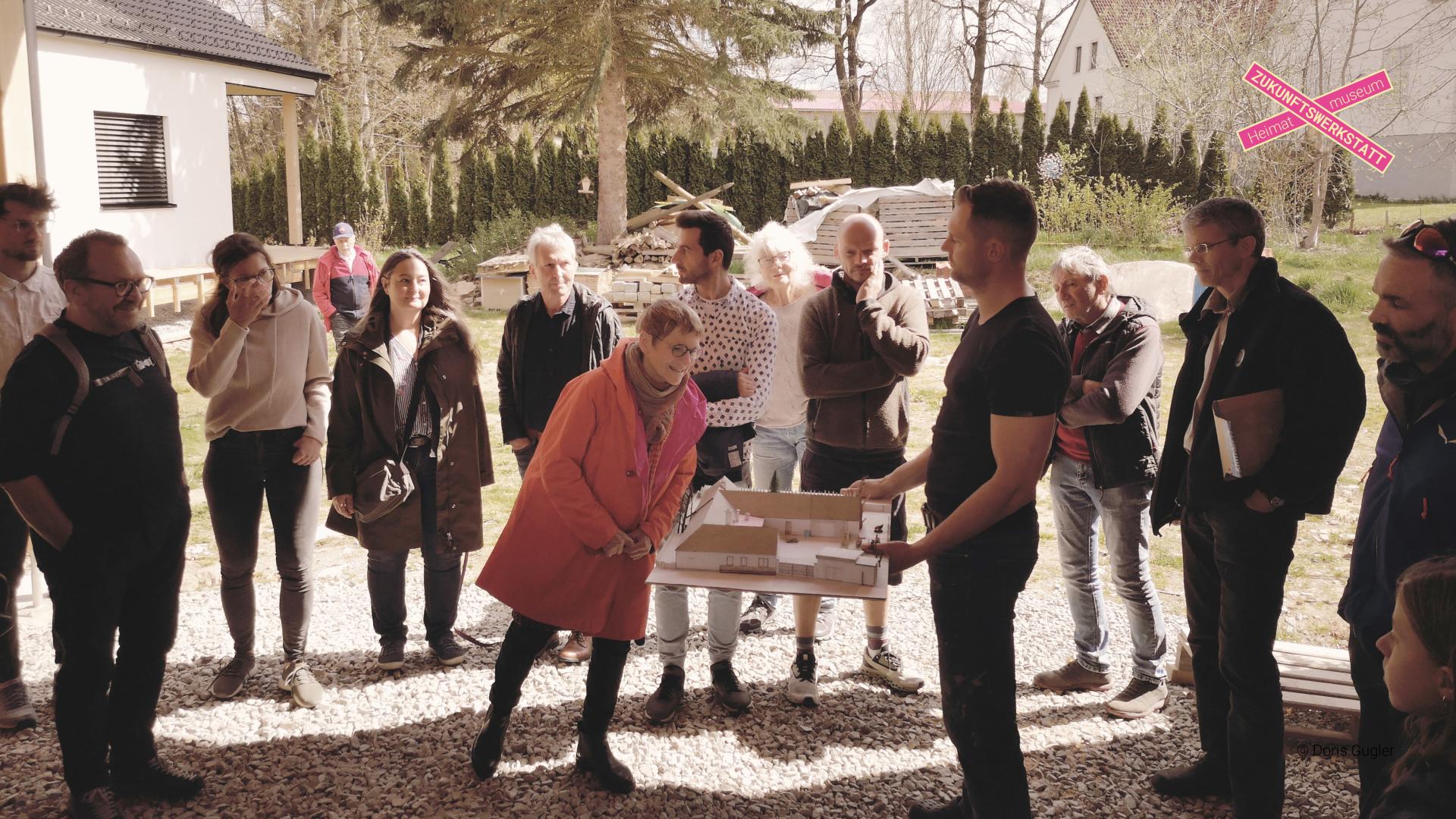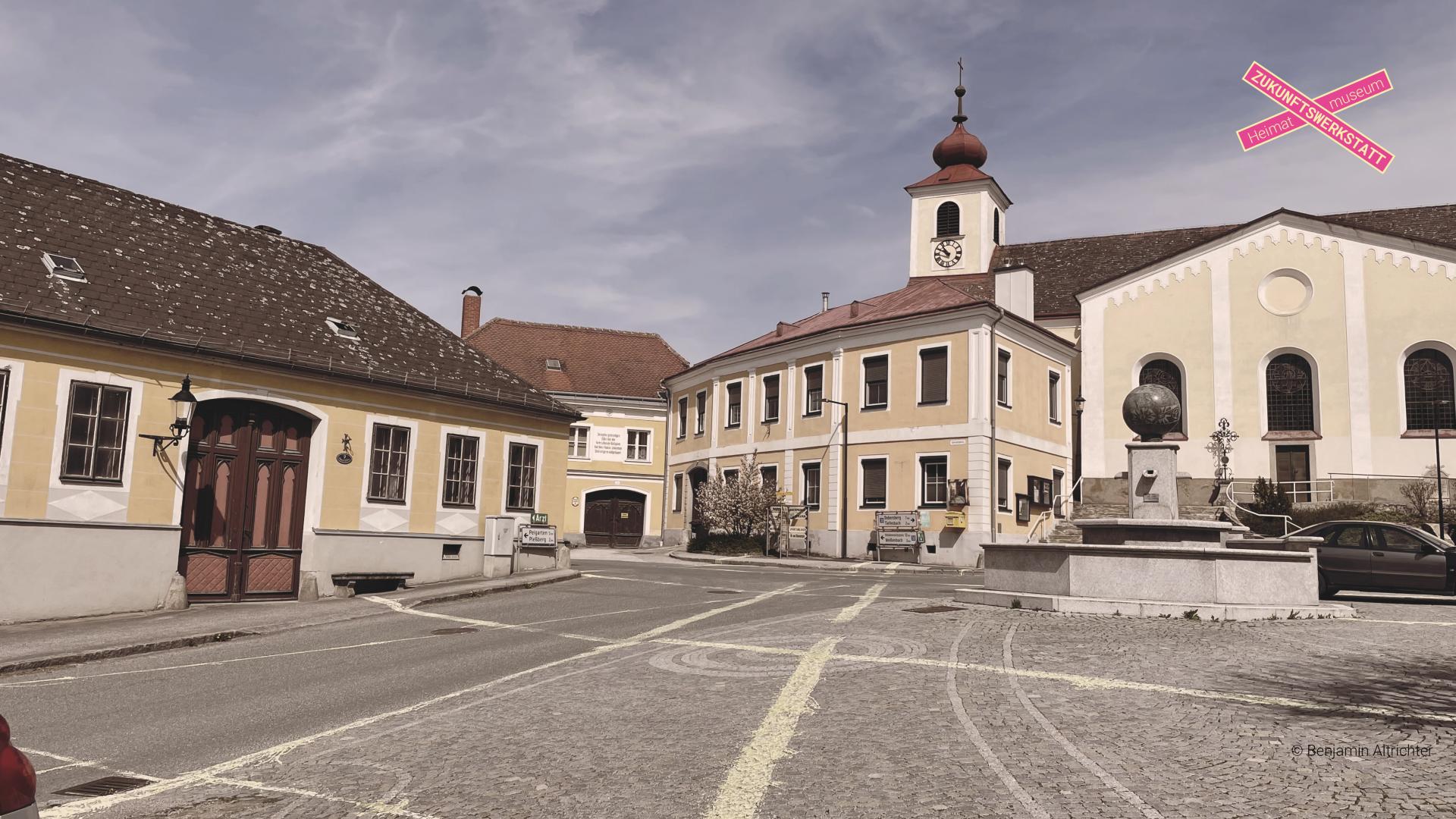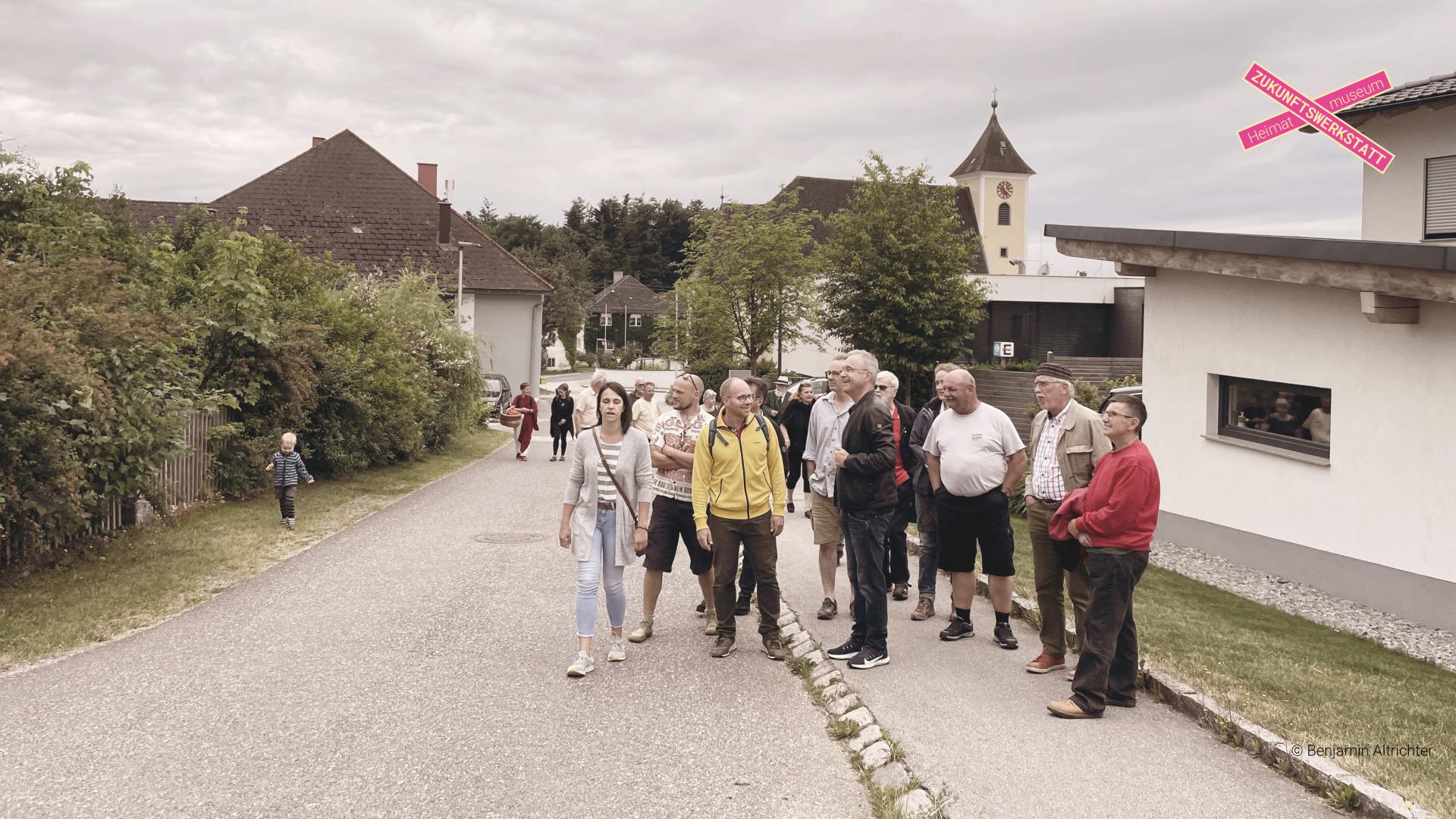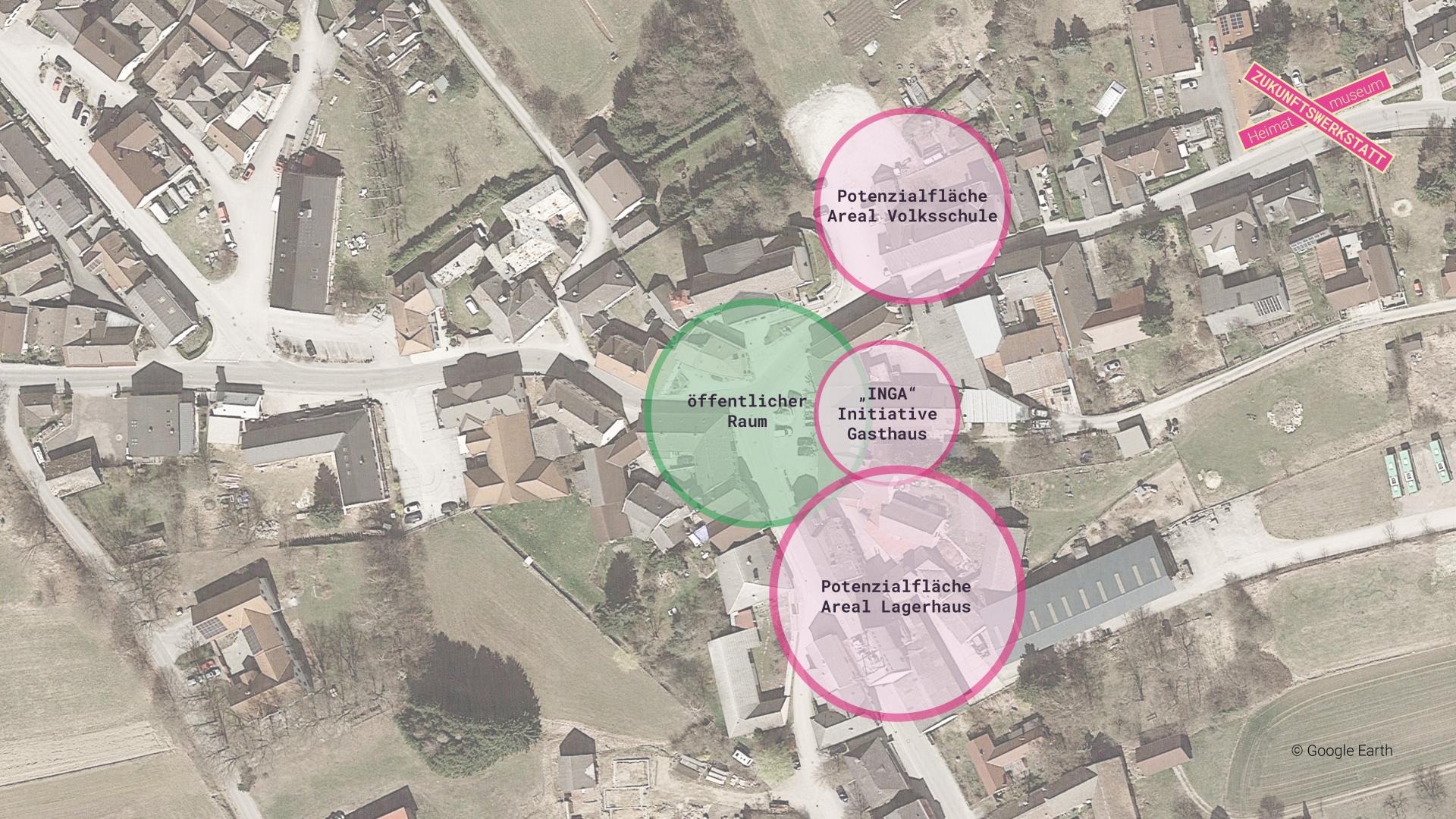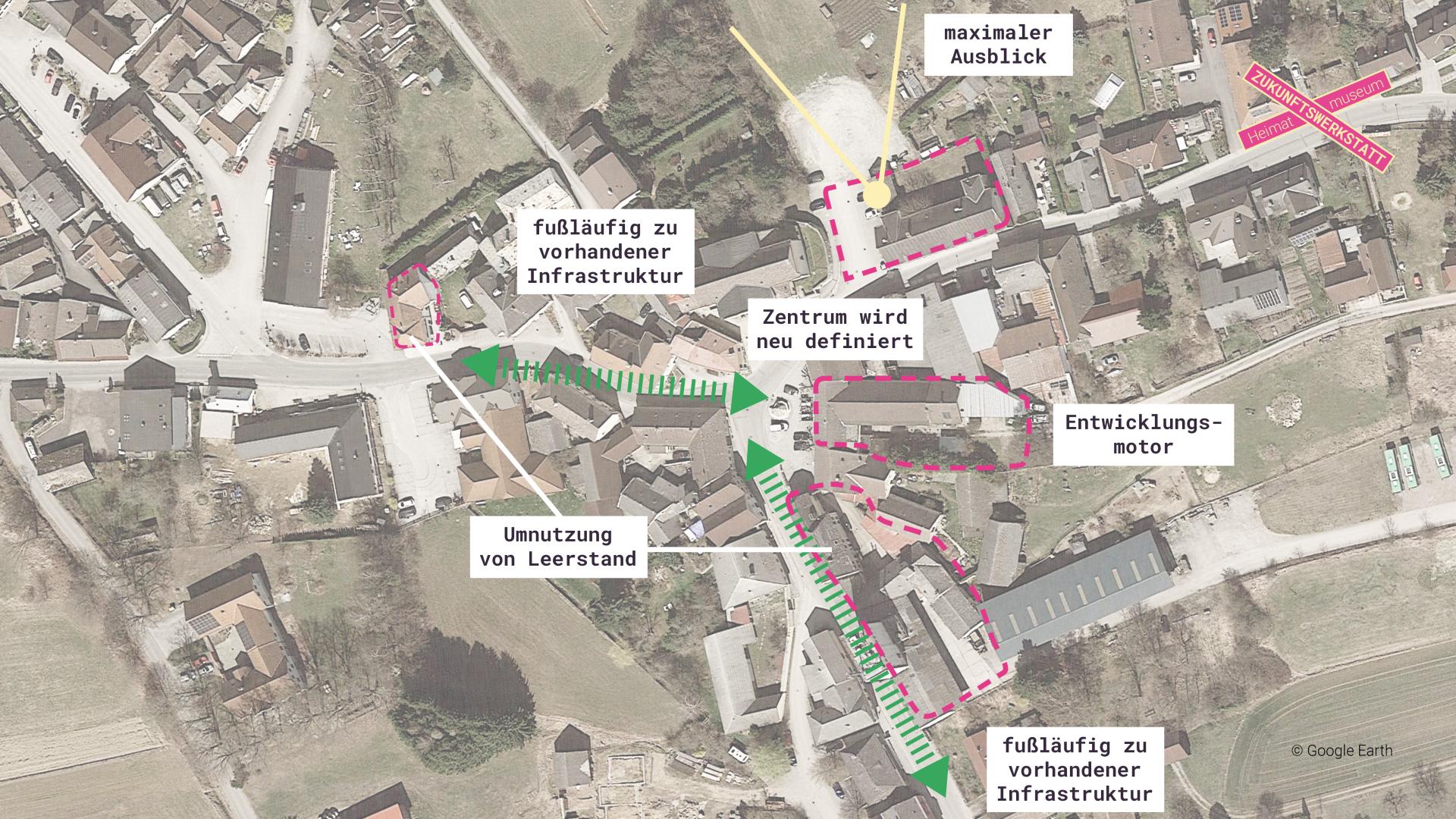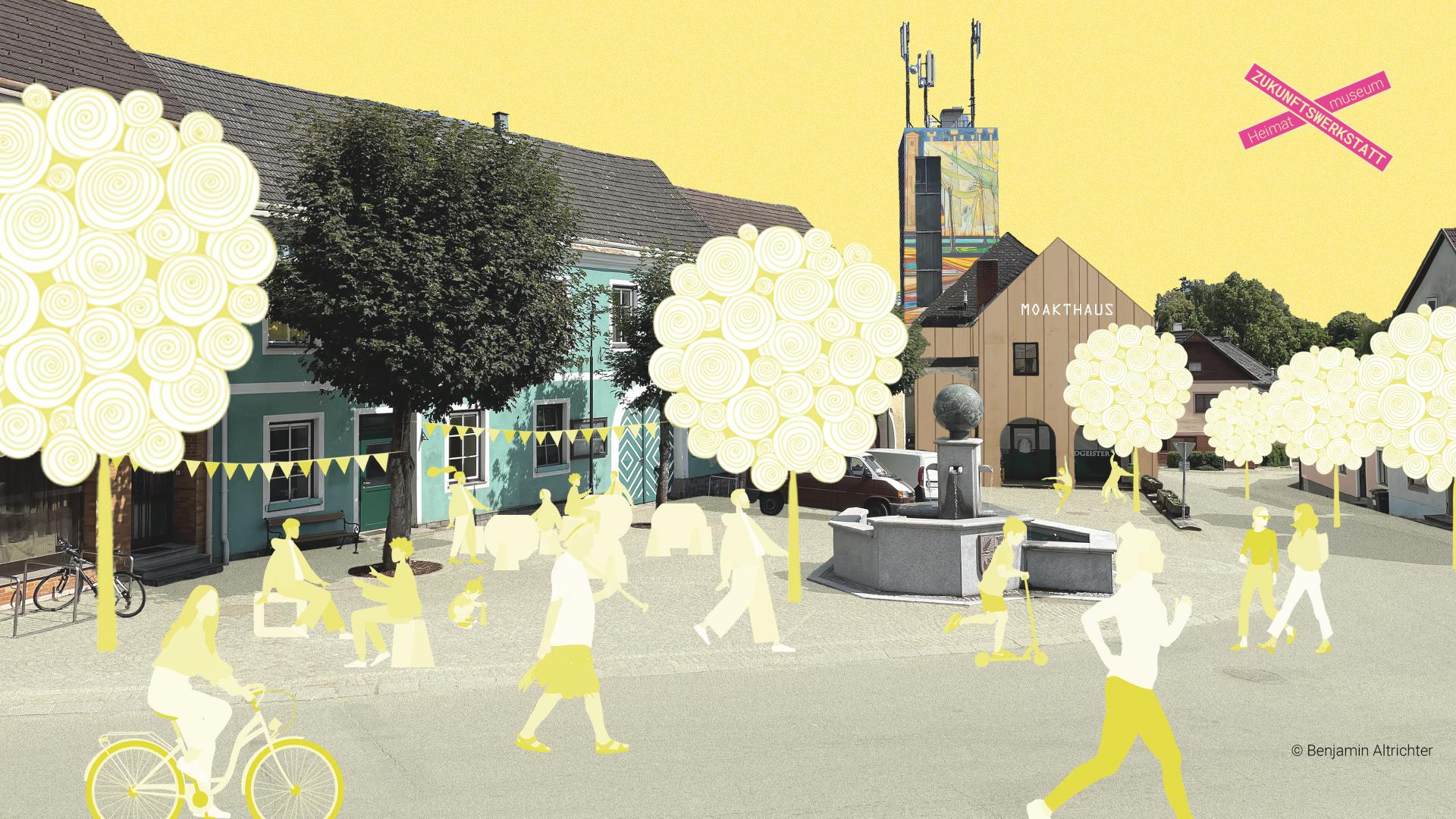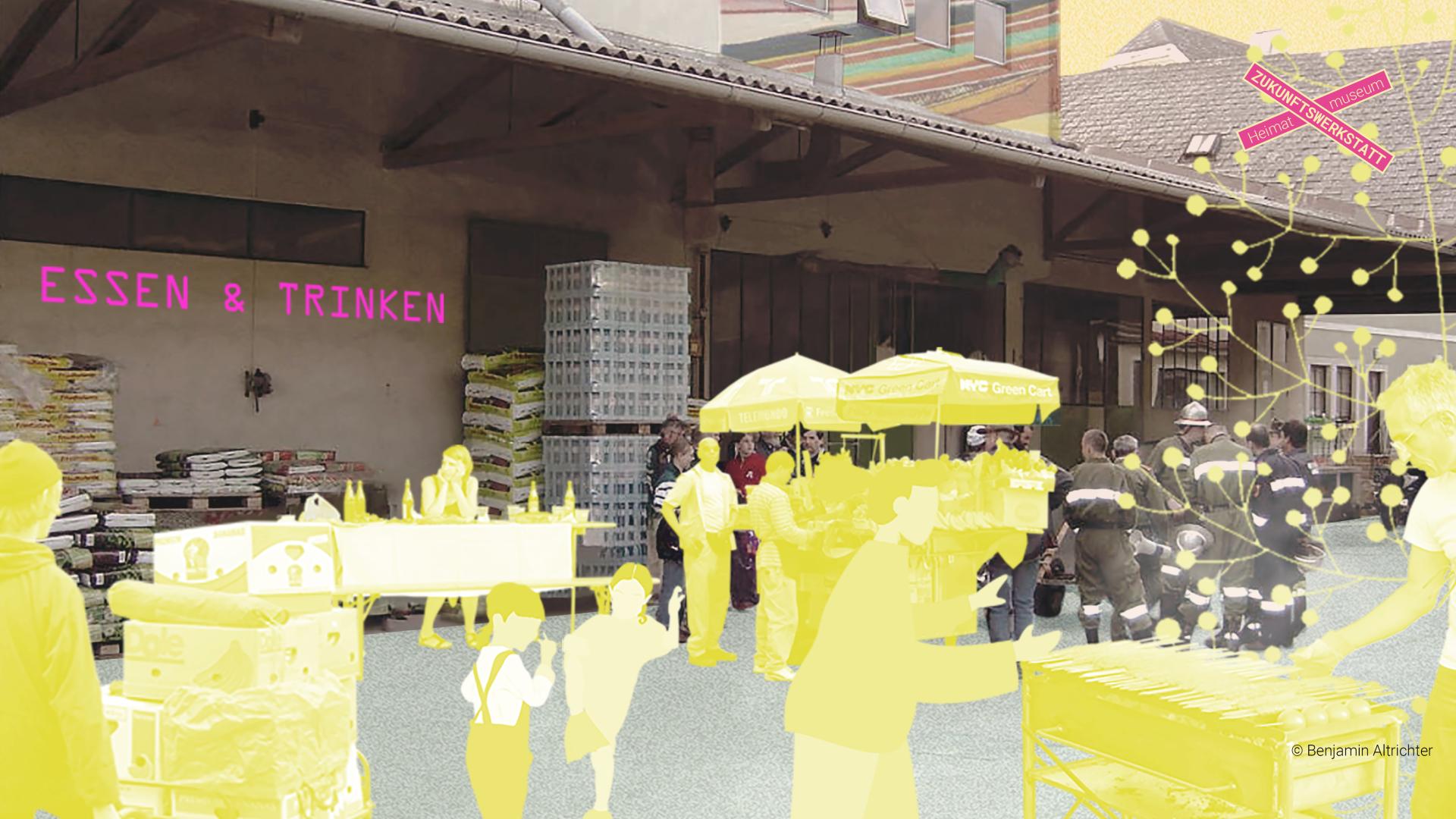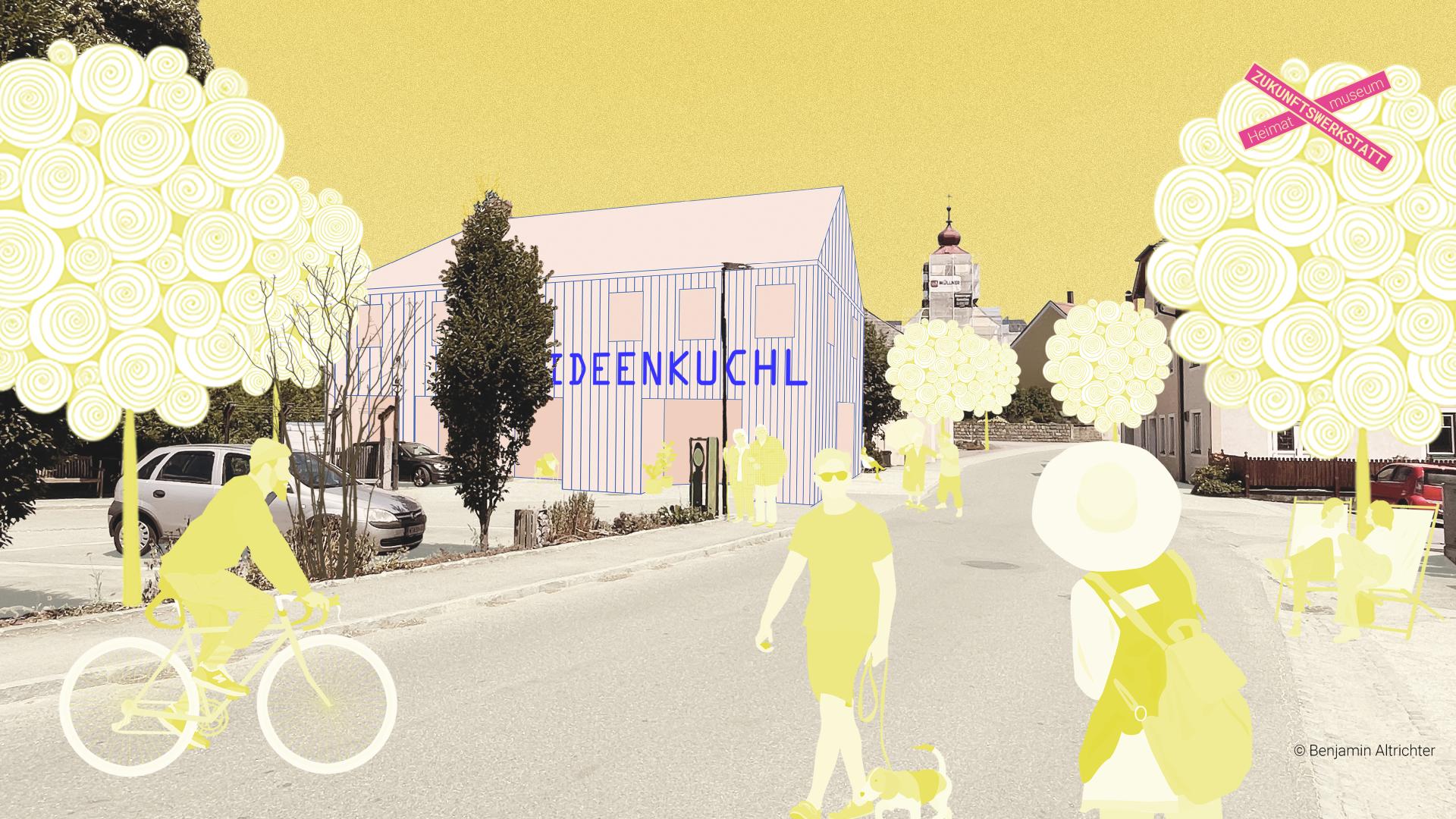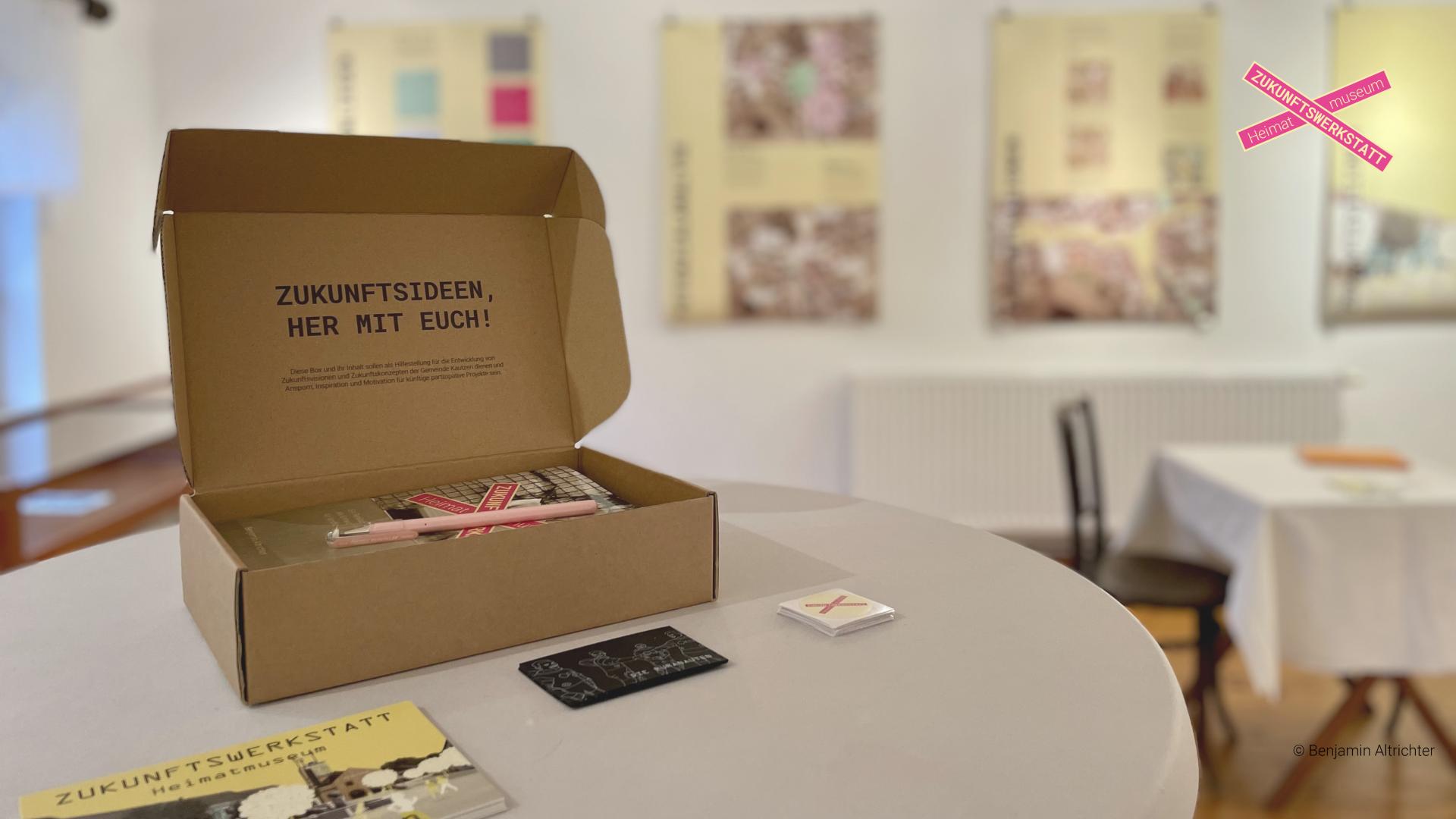"Future Workshop" Kautzen
Basic information
Project Title
"Future Workshop" Kautzen
Full project title
"Future Workshop" Kautzen - A real-world laboratory as a development strategy for rural areas
Category
Regaining a sense of belonging
Project Description
The "Future Workshop Kautzen" questions the current processes of village renewal and shows how it was possible to implement a project without subsidies, with a minimal private budget and a good deal of courage, to convince the population, decision-makers and many other people of its importance and how the development of rural areas requires adaptable methods and formats that must be applied with humour, charm and a certain tenacity.
Geographical Scope
Local
Project Region
Kautzen, as a testing site for other locations, Austria
Urban or rural issues
Mainly rural
Physical or other transformations
It refers to a physical transformation of the built environment (hard investment)
EU Programme or fund
No
Description of the project
Summary
The "Zukunftswerkstatt Heimatmuseum" questions the current processes of village renewal and shows how important it is to engage individually with a place and its region.
As a new development strategy for rural areas, the real-world laboratory, which ran from January to June 2023, used eleven established and adapted formats and methods in an experimental field trial to develop visions for the future of the 1,100-strong village of Kautzen in Lower Austria in collaboration with the local population. To this end, a future workshop was installed in the local museum of local history, an interactive exhibition was designed and a multifaceted programme of activities was created. On two days a week, all interested parties were invited to come along, be inspired and express their wishes and ideas. Over 300 visitors took advantage of this opportunity. The resulting visions for the future show the existing development potential of the municipality with a focus on the vacancies in the town centre and also serve as a decision-making aid, orientation point and motivational basis for the decision-makers. This contains the bound master's thesis, an ideas pad to record further visions, two posters of the visions for the future and enough space to store newly collected ideas. A final exhibition showed the results and developments.
As a pilot project, "INGA - Initiative Gasthaus" was launched by committed citizens in collaboration with the Zukunftswerkstatt. Together with the municipality, an attempt is now being made to reactivate a vacant inn in the town centre.
The project was realised without subsidies or an external budget. The infrastructure was provided by the municipality. In future, the association "Die Ruranauten", which I co-founded, will offer this form of village development.
As a new development strategy for rural areas, the real-world laboratory, which ran from January to June 2023, used eleven established and adapted formats and methods in an experimental field trial to develop visions for the future of the 1,100-strong village of Kautzen in Lower Austria in collaboration with the local population. To this end, a future workshop was installed in the local museum of local history, an interactive exhibition was designed and a multifaceted programme of activities was created. On two days a week, all interested parties were invited to come along, be inspired and express their wishes and ideas. Over 300 visitors took advantage of this opportunity. The resulting visions for the future show the existing development potential of the municipality with a focus on the vacancies in the town centre and also serve as a decision-making aid, orientation point and motivational basis for the decision-makers. This contains the bound master's thesis, an ideas pad to record further visions, two posters of the visions for the future and enough space to store newly collected ideas. A final exhibition showed the results and developments.
As a pilot project, "INGA - Initiative Gasthaus" was launched by committed citizens in collaboration with the Zukunftswerkstatt. Together with the municipality, an attempt is now being made to reactivate a vacant inn in the town centre.
The project was realised without subsidies or an external budget. The infrastructure was provided by the municipality. In future, the association "Die Ruranauten", which I co-founded, will offer this form of village development.
Key objectives for sustainability
The aim was to break old patterns and actions in the form of rezoning grassland or similar, to reactivate vacancies in the town center and to create a calming of inner-town traffic. Methods and formats were used to address and deal with these aspects and impart the necessary knowledge to the population, for example by visiting showcase projects as part of a local walk. There was always feedback on the wishes, ideas and needs of the population, which meant that the methods and formats used were also adapted accordingly. This adaptability and adaptability ultimately led to the success of the project.
Key objectives for aesthetics and quality
The installation of the future workshop in the local history museum has created a new space and place for the population within a familiar environment. A breath of fresh air within old walls. Furthermore, the Future Workshop also functioned as a co-working space, social meeting place and weekly public exhibition. This mix of uses was of crucial importance, as it meant that a large number of different people were addressed and the opinions of the population could be reflected in the developed visions of the future in an exemplary manner. Furthermore, a corporate identity was developed and disseminated through posters and invitation cards.
Key objectives for inclusion
In the eleven formats and methods used, meticulous care was taken to ensure that everyone was addressed and involved. From schoolchildren and farmers to excursions with municipal decision-makers and all interested parties. Due to the lack of a budget, the formats offered were always free of charge and open to all interested parties. If costs were incurred, a cooperation was entered into with associations, schools or the community and the costs were financed in this way. This cooperation also underlined the understanding and importance of the project. A further aim was to encourage the population to become more involved in community life, to feel heard and to have a contact point where their ideas, wishes and suggestions could be collected and utilized.
Results in relation to category
In the course of the project, an initiative group was formed by local residents with the aim of running the vacant inn in the town centre as a cooperative. The existing pressure of suffering coupled with a neutral contact point have now resulted in the municipality also becoming part of this project. The completed project has thus triggered a process that would otherwise not have materialised. Furthermore, the project gained a certain level of recognition in the region, as evidenced by invitations to symposia and lectures. This is also where the association I co-founded, "Die Ruranauten", comes to the fore, which will offer such future and identity processes in cooperation with other municipalities in the future.
How Citizens benefit
By examining the future development of the town and installing a future workshop, the top priority was to involve the citizens. For this reason, the future workshop was opened and supervised two days a week in order to collect the visions, wishes and ideas of the citizens and to present these in the next step in visions of the future in the form of collages. Without this involvement, the importance would not have been conveyed, future projects would have been significantly more difficult to implement and awareness of sustainable and future-oriented local development would not have been raised.
Physical or other transformations
It refers to a physical transformation of the built environment (hard investment)
Innovative character
The innovative approach is characterized by the implementation as a real laboratory with an open-ended and process-oriented character and the constant presence of an active expert on site. Another innovative aspect is the diverse and newly adapted application of the formats used, not only classic citizen participation but also art installations, workshops on topics such as agriculture and building culture as well as public events. The development of a bottom-up movement is being promoted, thus ensuring the integration of the local population.
Disciplines/knowledge reflected
The project focused on communicating new concepts in relation to future village development. Particular emphasis was placed on the importance of building culture, architecture and the significance of a local identity. All methods and formats were characterized by these values. This made it possible to communicate these topics in a low-threshold manner and to generate understanding for them.
Methodology used
Adapting established formats and methods to the location and region, responding to acute problems and requests, acting with humor, charm and tenacity.
How stakeholders are engaged
The aim was to develop the project together with local politicians, but this did not materialize. In the course of the project, however, local political decision-makers were repeatedly invited. As a result, towards the end the municipality understood that something had to be done about the vacancy, in particular about a vacant inn, and has now started its own development process. Several other mayors became aware of the project through the media and expressed their interest. As part of the formats and methods used, experts were repeatedly invited to accompany the process.
Global challenges
Rural exodus, rural skills shortage, dependence on private transport, vacancies, land consumption and soil sealing, activation of brownfield sites, identity creation, strengthening of town centres.
Learning transferred to other parties
The methods and formats applied can be used for other municipalities, but always adapted to local characteristics and circumstances. Don't copy, understand!
Keywords
rural areas
village renewal
participation
creating idendity
real-world labaratory

